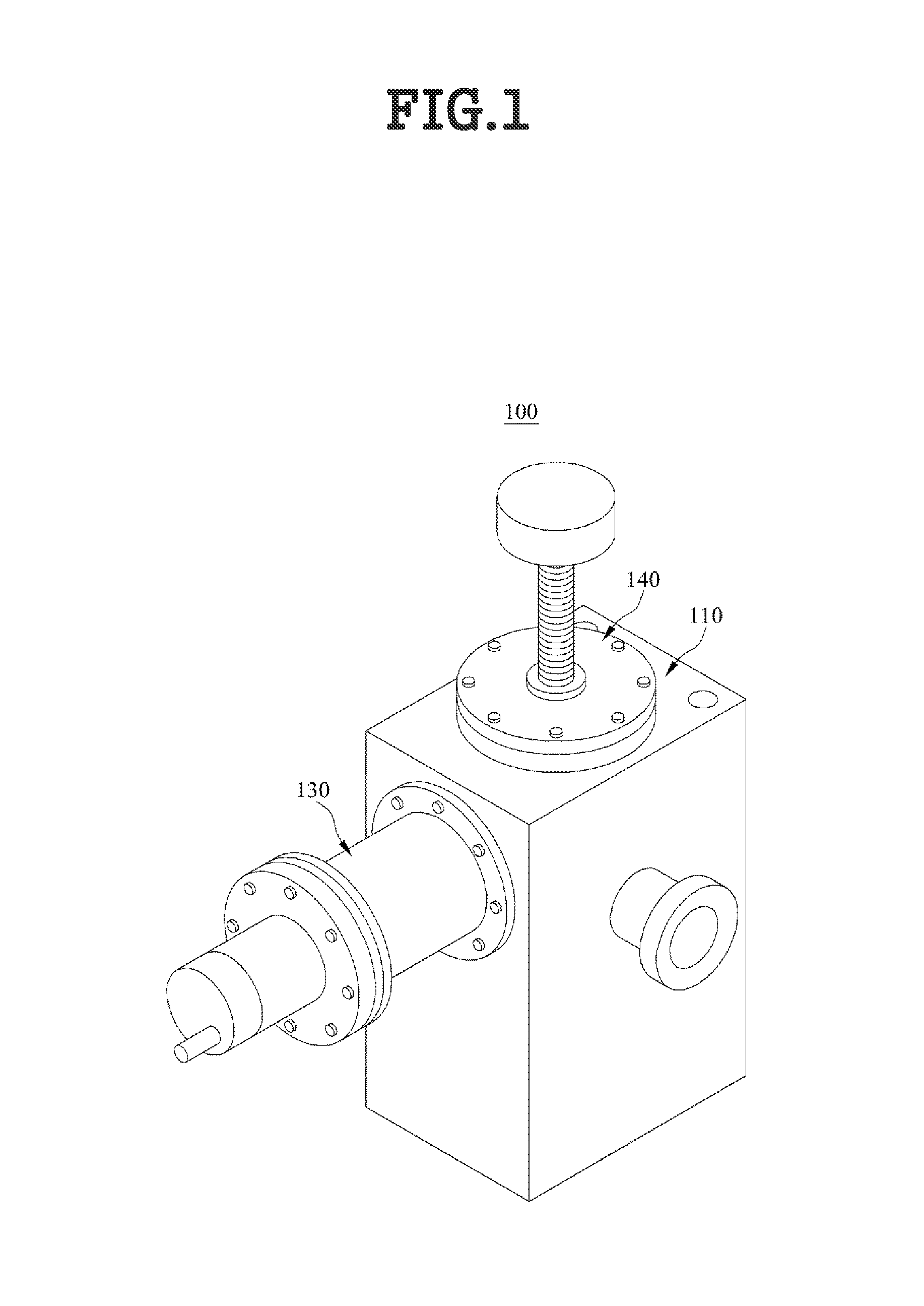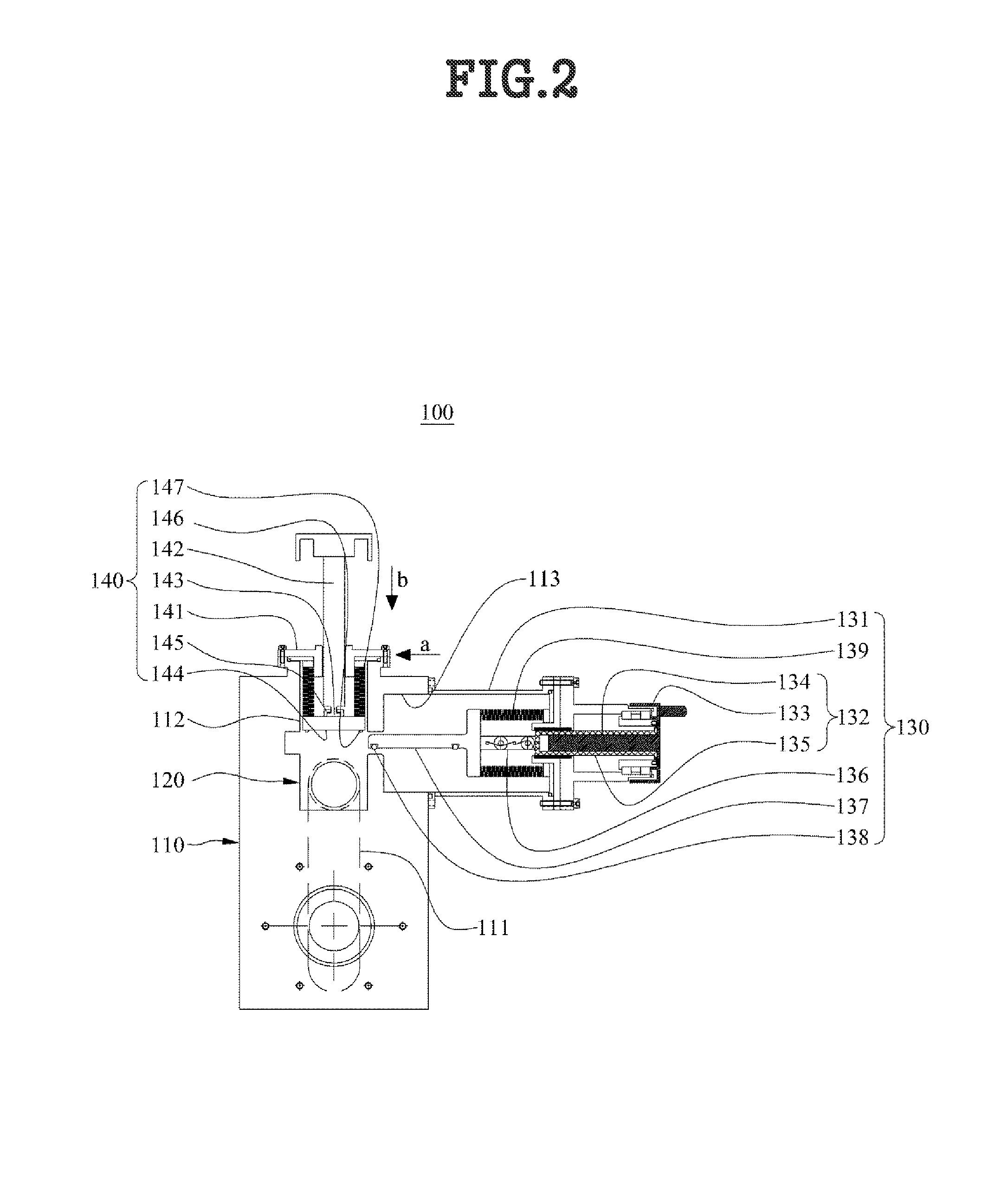Vacuum isolation valve
- Summary
- Abstract
- Description
- Claims
- Application Information
AI Technical Summary
Benefits of technology
Problems solved by technology
Method used
Image
Examples
Embodiment Construction
[0040]The objectives and effects of the present invention and the technical configurations of the present invention to achieve them will be apparent with reference to embodiments of the present invention described in detail with the attached drawings. A detailed description of a generally known function and structure of the present invention will be avoided lest it should obscure the subject matter of the present invention. Although the terms used in the present invention are selected from generally known and used terms, taking into account the structures, roles, and functions of the present invention, they are subject to change depending on the intention of a user or an operator or practices.
[0041]It is to be clearly understood that the present invention may be implemented in various manners, not limited to embodiments as set forth herein. The embodiments of the present invention are provided only to render the disclosure of the present invention comprehensive and indicate the scop...
PUM
 Login to View More
Login to View More Abstract
Description
Claims
Application Information
 Login to View More
Login to View More - R&D
- Intellectual Property
- Life Sciences
- Materials
- Tech Scout
- Unparalleled Data Quality
- Higher Quality Content
- 60% Fewer Hallucinations
Browse by: Latest US Patents, China's latest patents, Technical Efficacy Thesaurus, Application Domain, Technology Topic, Popular Technical Reports.
© 2025 PatSnap. All rights reserved.Legal|Privacy policy|Modern Slavery Act Transparency Statement|Sitemap|About US| Contact US: help@patsnap.com



